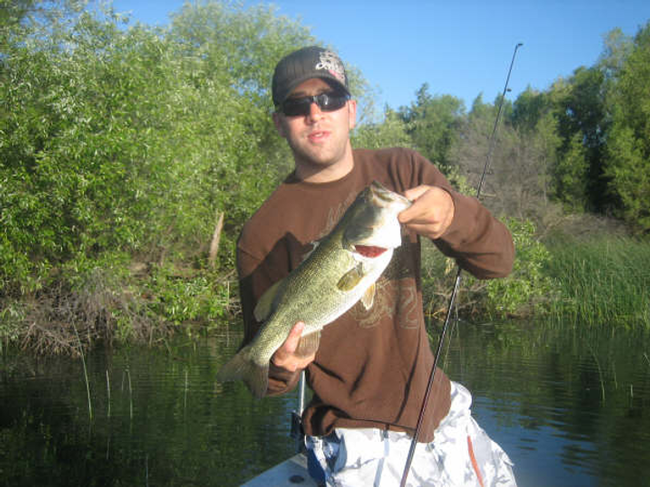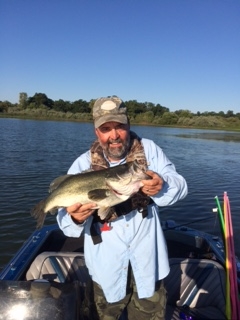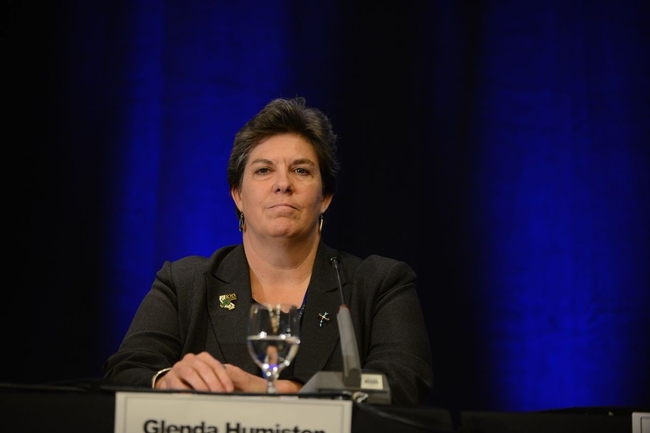Posts Tagged: Economics
Communities reel in revenue from sport fishing
In August, the Clayton Fire burned nearly 4,000 acres and 198 homes and businesses in Lake County. In 2015, the Valley, Rocky and Jerusalem fires together burned 170,623 acres and destroyed 2,078 structures. But the devastating Lake County wildfires haven't put a damper on fishing at Clear Lake, which reels in roughly $1 million to the community annually, according to a report from UC Cooperative Extension.
“The lake's economic attraction has not been negatively impacted by the fires,” said Greg Giusti, UC Cooperative Extension advisor in Lake County and author of the study. “The fish are fine and the anglers keep coming.”
Giusti's report outlines the economic value of fishing on Clear Lake, highlighting the importance of the outdoor pastime to the local economy.
Bass, crappie, catfish and bluegill thrive in Clear Lake's warm water, with its rich plant life and abundant food supply.
“People come from all over the country to fish Clear Lake,” said Giusti, who studies fisheries and freshwater ecology.
Teeming with fish, Clear Lake's reputation attracts serious anglers. Bass Master Magazine (July/August 2016) rated Clear Lake third out of the top 100 bass fishing lakes in the country and first among the nine western states.
More data need to estimate true economic value of fishing
Based on a conservative estimate of the number of anglers and multiplying by $58.16, (the U.S. Fish and Wildlife Service's estimate of an angler's average daily fishing-related expenditure), Giusti concluded Clear Lake fishing is a $1 million enterprise. He considers the true value of fishing on Clear Lake to be much higher because limited data was available to understand the full economic value.
To estimate the number of anglers, Giusti doubled the number of quagga mussel stickers sold and added the number of people registered for Clear Lake fishing tournaments. Before entering the lake, boats must pass the county's monthly quagga mussel inspection for the invasive species and receive the sticker. Giusti assumed an average of two anglers per boat, for a total of 10,156 spending $590,673 annually. Since 6,498 Lake County residents have fishing licenses, he estimated that they spend at least $377,923.68 on fishing annually.
He thinks local businesses can capitalize on fishing to bring even more revenue into the community by enticing anglers and their families to engage in other activities during their visit.
“Because access to the lake is open and free, we don't know how often anglers return to Clear Lake and for how long they stay,” Giusti said. “While they're here, folks are spending money on food, gas, tackle and maybe lodging. If they bring their families, Dad may be fishing while Mom and the kids might be at the movies.”
California Department of Fish and Wildlife collects about $57 million in fishing license sales each year. Giusti found that more than 150,000 licenses were sold in 2014 to anglers in Lake County and neighboring Mendocino, Sonoma, Colusa and Sacramento counties, which are close enough to make a day trip to Clear Lake.
Although local businesses typically gear up for summer tourists, Giusti sees marketing opportunities around fishing during the spring and fall, as the primary angling months occur before and after summer.
“Right now all the focus is on summer tourism and wine, while the most active visitor months are not recognized,” Giusti said. “Spring months are the most popular boating months. Businesses should be hanging banners downtown, putting posters in the windows welcoming anglers with specials for meals, promotional events highlighting fishing, and even sponsored fishing tournaments.”
Other California communities could also benefit by capitalizing on fishing, in Giusti's opinion.
“Freshwater fishing in California represents a $1.4 billion industry, generating 22,000 jobs and providing more than $920 million in salaries and wages,” said Giusti. “California ranks fifth in the nation based on the value of fishing economics.”
The American Sportfishing Association estimates that more than 33 million people enjoy fishing in America, and spend an average of $1,441 per year on fishing.
To download the full report, “Understanding the economic value of angling on Clear Lake – A profile of a famous lake,” visit http://ucanr.edu/sites/ClearLakeAquaticWebsite.
International trade important to California agricuture
The vice president of UC Agriculture and Natural Resources, Glenda Humiston, was a speaker at the summit. She said UC has calculated that 1.2 million California jobs are tied to the state's natural resources - including agriculture, fishing, mining, recreation and renewable energy. Humiston predicted there will be 300,000 more jobs in this sector over the next five years.
However, the pool of workers for the jobs is diminishing because young people in Mexico and Central America, who often fill these positions, are increasingly able to find better paying, less taxing jobs elsewhere.
"There's going to be massive upheavals in the system," Humiston said.
The article noted that nearly every industry leader at the summit stressed the importance to California agriculture of the Trans-Pacific Partnership, a trade deal involving the U.S. and 11 other Pacific Rim nations.
Giannini book documents family's gifts to UC
A new book with historical and contemporary information related to a generous 1928 gift to UC supporting agricultural economics will be available to the public April 15, according to a UC Davis news release distributed yesterday.
The new publication, titled A.P Giannini and the Giannini Foundation of Agricultural Economics, is being sold through the ANR catalog for $50 for softcover and $75 for hardcover.
The Giannini name has been long associated with UC. Amadeo Peter Giannini, founder of the Bank of Italy (which later became the Bank of America), donated $1.5 million to build Giannini Hall for the College of Agriculture at UC Berkeley and to establish the Giannini Foundation of Agricultural Economics, according to the release.
Currently, the foundation supports activities in agricultural, resources and environmental economics at UC Davis, Berkeley and Riverside. Research conducted through the foundation has focused on issues such as price instability, management of surplus production, design of marketing institutions, impacts of water development, and competition for water, land and labor.
The new book, edited by UC Davis emeritus professors Warren Johnston and Alex McCalla, contains:
- Proceedings of the Giannini Foundation of Agricultural Economics’ 75th Anniversary Symposium, held in spring 2006
- Giannini Foundation annals, spanning 1928 to 2009, including membership and leadership information, honors and awards, list of doctoral recipients, and foundation activities and publications
- Archival materials that document the history of agricultural economics at the University of California, early foundation history, and reflections from oral histories and biographies of selected members
- A collection of historical documents and news clips associated with the gift to the University of California.

Amadeo Giannini in 1922. (Photo: Wikipedia Commons.)
Lengthy discussion on Freakonomics blog with UC expert
Agricultural economics has prompted a lively online discussion on Steven Dubner's New York Times blog "Freakonomics." As of this morning, 71 comments had been posted, which combined with a lengthy Q & A add up to more than 13,000 words, some heated.
This post had its beginnings a week or so ago when Dubner invited his blog readers to send questions for the director of the UC Agricultural Issues Center, Dan Sumner. The blog post included 23 questions and answers touching on such hot topics as organic agriculture, local food production, obesity and farm subsidies. Dubner titled the discussion, "The Illogic of Farm Subsidies, and Other Agricultural Truths."
The blog post and comments provide a wealth of information and opinions. They also exemplify the growing popular interest in economics, for which partial credit goes to the book "Freakonomics," which Dubner co-wrote with University of Chicago economist Steven Levitt. Levitt was the substance, and Dubner the style. The book peaked at No. 2 on the New York Times best seller list.
With the popularity of agricultural economics in the Freakonomics blog, perhaps Sumner will become something of a regular.





